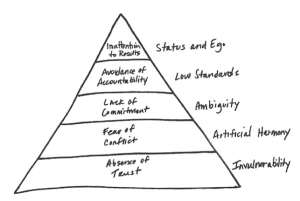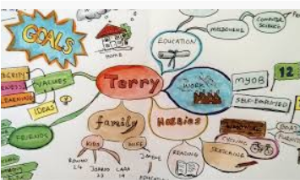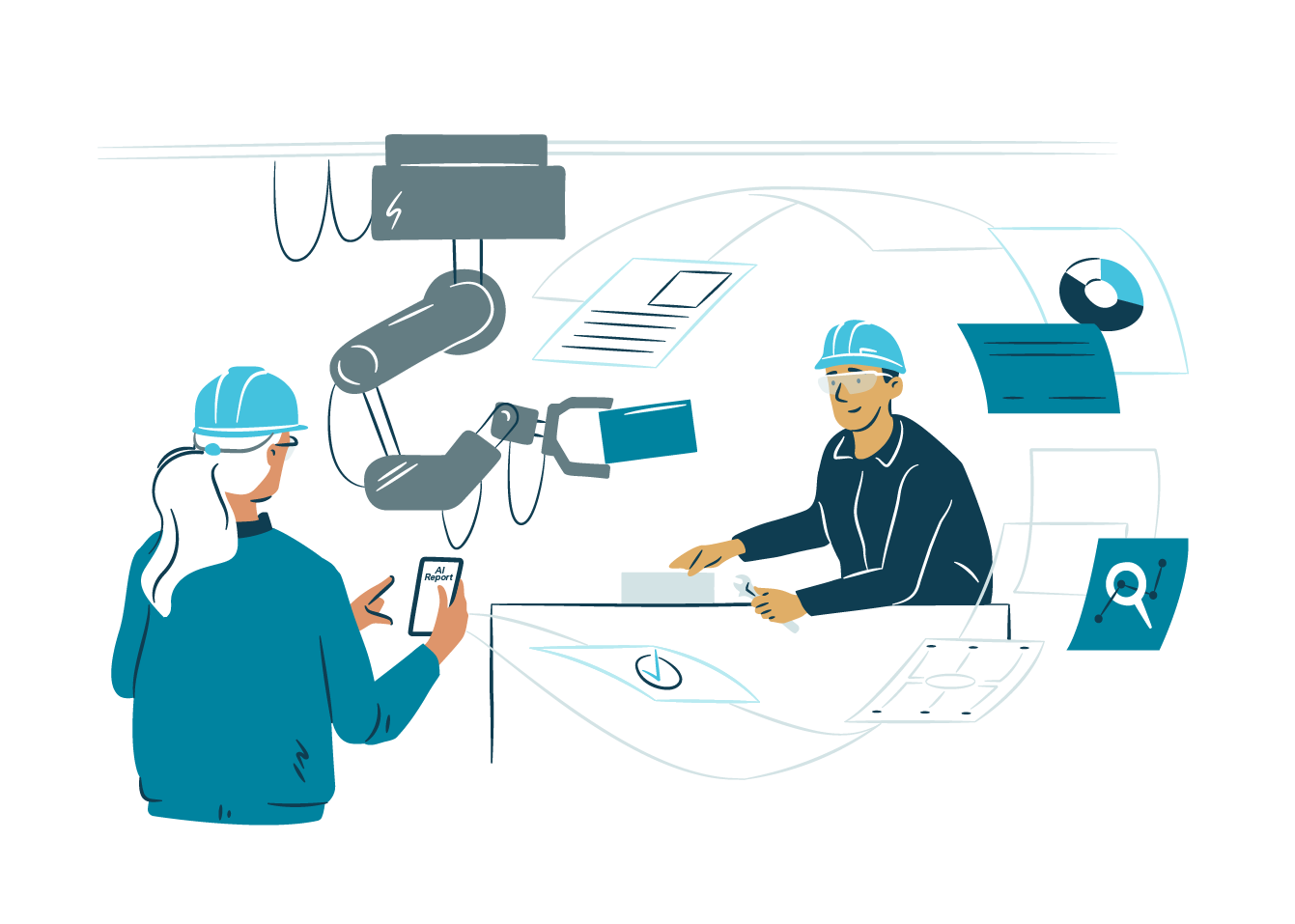How to create High-Performance Teams?
Where to start? There are three things every team member can start doing immediately to foster team building:
1. Frame the work as a learning problem, not an execution problem.
2. Acknowledge your own fallibility.
3. Model curiosity and ask lots of questions.
This is a great place to start. If you are interested in more detailed and longer approach, continue reading.
Two perspectives to building high-performing teams
Google researchers believe people can do more working together than alone. Here is their proposal of the characteristics of a high performing team.
(Source: https://rework.withgoogle.com/print/guides/5721312655835136/)

According to Patrick Lencioni there are 5 hierarchical levels of dysfunction that might be blocking the way of the team being high-performing. (Patrick Lencioni, 5 Dysfunction of a Team )
The levels are objects that prevent the team from reaching their full potential. In other words, by winning all of these barriers, teams are able to scale their performance almost infinitely and in a sustainable way!
In my experience fixing the absence of trust is ”the 20% of work which you get 80% of results”.
Absence Of Trust, Level 1
We trust who we know.
How well do you know your work colleagues? Their hobbies, ambitions or personal background? Forming closer connections with your team members, leads to improved team collaboration. You’ll learn what fires their ambition and keeps them motivated.
– Personal Maps, Improving team collaboration
Absence of trust is the first of five significant factors which prevents teams from reaching their full potential and the high-performance state. It is caused by people are unable to show their weakness and true self in front of others.
Absence of trust causes:
- Time, resources and energy are wasted because of people are building ”protective shields”.
- There is a huge barrier to ask or even give help inside the team.
- People feel the need to be invulnerable.
- Team meetings (all) are ineffective.
- People are trying to hide mistakes.
What happens when trust is achieved?
- Innovations are enabled! People aren’t afraid to speak their thoughts and there is no need to be afraid of being mocked by anyone on team.
- Cooperation improves radically.
- Psychological safety is reached.
- Failures and mistakes are shared openly and they are used as opportunities to learn.
How to reach mutual trust?
To practice vulnerability and to improve team spirit can be easily done with the Personal Map method. Personal Map helps team members to share experiences while everyone gets to know each other better (goals, passion, worries and so on). Psychological safety is prerequisite for teams to be proactive. Without trust and safety team members cannot trust that working for team goals also helps them to reach their own goals. Without trust and safety team members will set their own interest before teams interests when making decisions.
Trust is knowing that when a team member does push you, they’re doing it because they care about the team – Lencioni.
Here is how to create a Personal Map (Absence of Trust)

(Picture: https://management30.com/practice/personal-maps/)
A) Personal map for the whole team
Use this in a team building or retrospectives. Any mind map tool can be used, but I prefer using tools like Miro or Mural. Here is a link to anonymous Mural login: team map. Please contact me, if there are any problems with the Mural.
You need to have an account to use Miro. If you prefer Miro over Mural, here is a team map for you.
Follow these steps when using the team map:
- Create copies of an empty Personal Map for every team member.
- Split the team into 2 person groups (or any other suitable group).
- Randomly give 2 team member names to teams where they are not part of.
- Fill Personal Maps for persons whose name you got.
- Time cap 20min (10min/person)
- Use Post-Its to fill Personal Maps.
- Fill everything you know about the target person in your group.
- Important thing is that in this phase target person is not allowed to participate in filling Personal Map information.
- After Personal Maps have been filled
- Group by group present your Personal Map to target person and rest of the team.
- Target person can fill ”gaps” in a way he/she wants.
- Target person can reveal as much or as little information as he/she likes.
- Go through every Personal Map
- This will take time about 5-10min/person.
- That’s it!
- Main point in Personal Map is that it is first created by other team members (that way teams find out how little they know about other team members)
- After that anyone can reveal as much as they like from themselves.
Note! Save your team’s Personal Maps to a common place where anyone can access them if needed.
B) One Person at a time
This is useful when a new member joins the team. The same links and instructions work with this option. The most important thing is that target person is not allowed to participate filling of their own Personal Map. Other team members must do it first. After the Personal Map has been presented to the new member, they can fill in the gaps.
There are also other tools that you can utilize to create psychological safety. Check them out in here.
”A team feels psychologically safe to its members when they share the belief that within the team they will not be exposed to interpersonal or social threats to their self or identity, their status or standing and to their career or employment, when engaging in learning behaviors such as asking for help, seeking feedback, admitting errors or lack of knowledge, trying something new or voicing work-related dissenting views.” – Amy Edmondson
The Personal Map is a very easy method to implement with any team. It is suitable for introverts and extroverts as you can reveal as much as you like from yourself. Do you know how you can grow the feeling of relatedness in your team in order to achieve trust and flow state within a team?
Sami Kutvonen
Technical Project Manager (Scrum Master, Agile Coach)
https://www.linkedin.com/pulse/deep-dive-five-dysfunctions-team-summary-notes-tons-more-omar-usman
https://blogs.hope.edu/center-for-faithful-leadership/uncategorized/five-dysfunctions-of-a-team/
https://medium.com/@johnpcutler/of-course-psychological-safety-but-how-21adb8d97ba7
http://abinoda.com/book/five-dysfunctions-of-a-team
https://www.tablegroup.com/imo/media/doc/Team_Effectiveness_Exercise.pdf
https://www.goodreads.com/work/quotes/22516-the-five-dysfunctions-of-a-team





